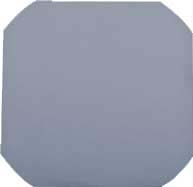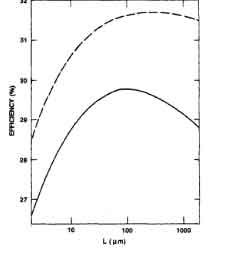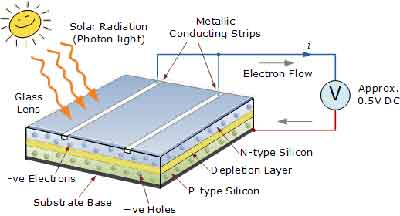Solar Silicon Wafers Psuedo Squartes 125mm and 150mm
Solar Silicon Wafers
We provide backgrinding solar silicon cells down to 50 micron.
Thinner solar cells can provide more efficiency as thinner cells allows for better heat dissipation and thus happy electrons!
Get Your Quote FAST!
Order Solar Silicon Wafers Online and SAVE! Or Email us your specs/qty.
![]()
We have in-stock Solar Silicon Waffers
156mm x 156mm
N/Ph (100)
Res 1-5 ohm-cm
200um as-cut
Saw Marks <15um Diagonal Length: 200mm Corner Length: 15.4mm TTV: < 30um Bow: < 40um Surface
Solar Silicon

Solar Cell Material Top Rated Theoretical Efficiencies as of 2015:
- Multijunction Cell 44%
- Single Junction GaAs 29%
- Crystalline Silicon Cells 24%
- Thin Film Technologies 20%
- Emerging Photovoltaic 14.1%
Specs provided by NREL.
Below are some of our inventory with solar efficiencies!
At present,we had poly and mono solar cells in stock as follow.Hope it is useful to you.
6 inch Polycrystalline Solar cell
Poly solar cells,156*156mm,6 inch,3BB,16.0-16.7% efficiency,10,000PCS
Poly solar cells,156*156mm,6 inch,3BB,17.2-17.4% efficiency,30,000PCS
Poly solar cells,156*156mm,6 inch,3BB,17.6-18% efficiency,30,000PCS
6 inch Monocrystalline Solar cell
Mono solar cells,156*156mm,6inch,3BB,4.3Watt/PCS,40,000PCS,
Mono solar cells,156*156mm,6inch,3BB,18.8-19.5% efficiency,35,000PCS,
5 inch Monocrystalline Solar cell
125mm Mono Solar cells ,Sunpower, 2BB, 3.2W/PCS, 80,000pcs
Summary of Solar Cell Production, and Limiting Efficiency of Silicon Solar Cell
Limiting Efficiency
It has been well established that the limiting efficiency of single crystals falls at about 29% [Swanson] this limit  was established in the seminal work by Tiedje. In figure 1 we can see this limiting efficiency as a function of solar cell thickness. In this diagram, the peak efficiency is shown to be 29% with a thickness of just under 100µm
was established in the seminal work by Tiedje. In figure 1 we can see this limiting efficiency as a function of solar cell thickness. In this diagram, the peak efficiency is shown to be 29% with a thickness of just under 100µm
Typical production solar cells achieve about 20% efficiency, while the best laboratory efforts have achieved about 25% [Swanson]. Green provides an excellent summary of the current progress of high-efficiency single-crystal silicon solar cells, and reconfirms the 29% limit established by Tiedje.
Production Process
The process of manufacturing solar cells from single crystal p-type silicon wafers is detailed below. This is the generalized method used based on a number of sources. It should be noted that different companies have different patented, and trade secret processes for each of these steps, but the steps remain the same.
Texturing:
After an initial cleaning procedure, the wafer is textured to create pyramid-like structures on the surface of the silicon. This causes incoming sunlight reflected off of one pyramid to bounce into other pyramids on the surface improving the overall sunlight absorption rate.
N doping (usually Phosphorous):
A variety of methods are used to dope the top surface of the P-type wafer to create N-type regions. This process (typically gas diffusion in a high-heat furnace) creates the critical p-n junction which forms the permanent electrical field.
Edge diffusion cleaning:
The doping process causes the phosphorous dopant to diffuse to the edges of the wafer, if this excess dopant was allowed to remain it would cause short circuiting between the positive and negative contacts of the solar cell. The excess dopant is removed by an acid-etching procedure.
Anti-reflective coating
The wafer is then given an anti-reflective coating, usually silicon nitride, to improve absorption.
Screen printing of front and rear surface contacts
In the final step of the production process, front and rear surface contacts are screen printed onto the surface of the wafer to create the positive and negative contacts of the solar cell. The solar cells are then ready to be wired together to create solar panels.
References
1.) Tiedje et al; Limiting Efficiency of Silicon Solar Cells: https://optoelectronics.eecs.berkeley.edu/ey1984ieeeed315.pdf
2.) M.A Green; Progress and outlook for high-efficiency crystalline silicon solar cells https://144.206.159.178/FT/957/22841/412931.pdf
3.) Swanson, R.M; Approaching the 29% limit efficiency of silicon solar cells https://ieeexplore.ieee.org/xpl/login.jsp?tp=&arnumber=1488274&url=http%3A%2F %2Fieeexplore.ieee.org%2Fxpls%2Fabs_all.jsp%3Farnumber%3D1488274
4.) Solar Cell production process https://www.photonics.com/Article.aspx?AID=40098
5.) Solar cell production video: https://www.youtube.com/watch?v=TRATu_wEgAY
6.) Solar Cell production video: https://www.youtube.com/watch?v=fZ1SC-vUe_I

